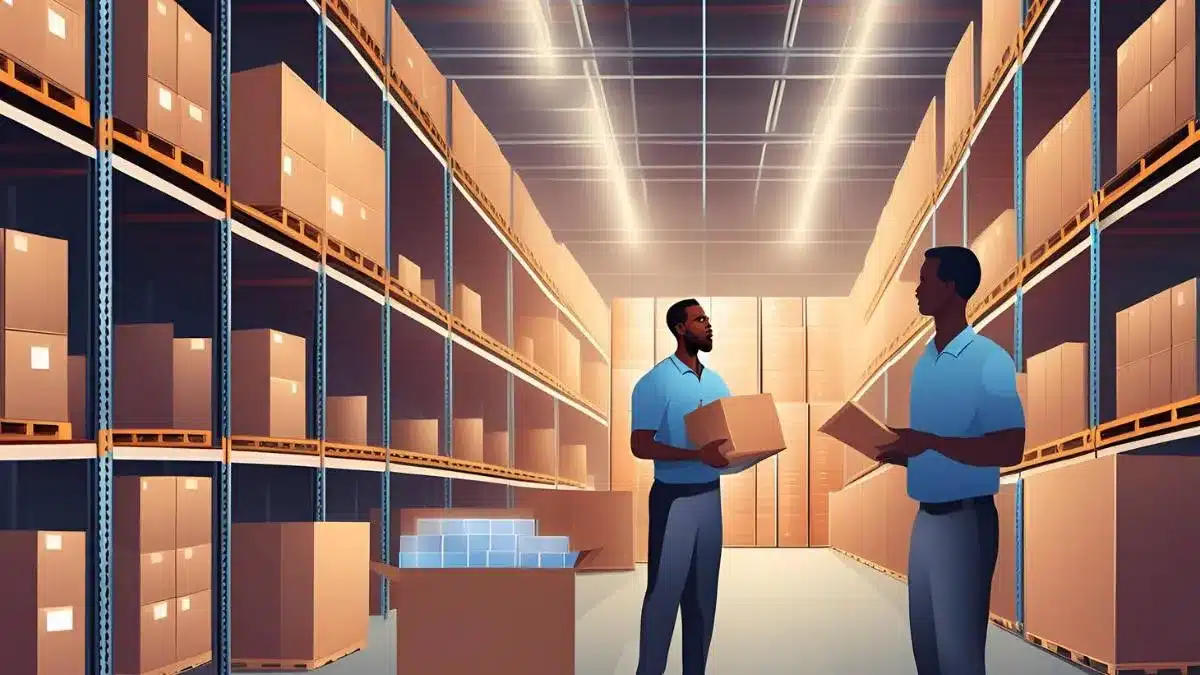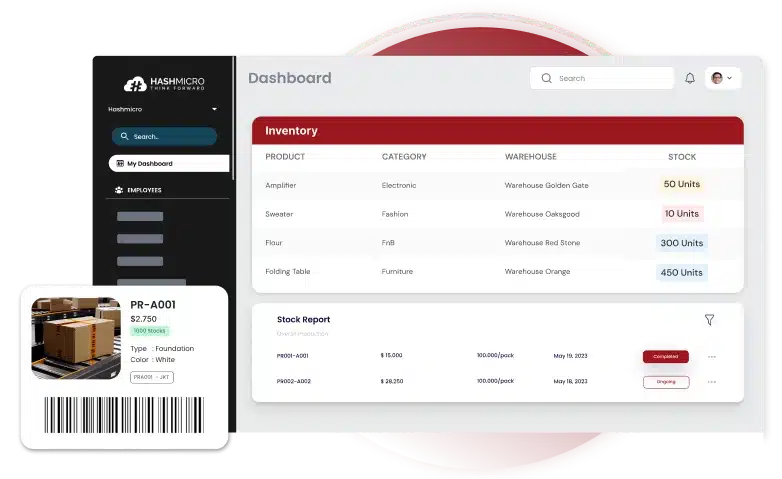Choosing the right warehouse storage system is crucial these days, right? Walang sukatan na akma sa lahat (there’s no one-size-fits-all) solution regarding how you store your inventory. Whether you stack pallets right on the floor or use rolling shelves, the main goal is to figure out what setup lets you use your space most effectively.
When deciding on a storage system, several factors need consideration. These include the size and packaging of your products, the frequency of inventory turnover, and the total number of stock-keeping units (SKUs) you manage. Some methods are better for lower inventory levels versus large quantities.
Additionally, environmental factors such as temperature and humidity can significantly influence your choice of storage solutions. It’s also important to consider the system’s accessibility and ergonomics to ensure the safety and efficiency of warehouse staff.
This article will provide a comprehensive overview of warehouse storage systems, exploring businesses’ various methods and strategies for optimizing space and enhancing operational efficiency.
Key Takeaways
|
Table of Contents
What is a Warehouse Storage System?
A warehouse storage system is designed to maximize your use of warehouse space, ensuring everything is well-organized and easily accessible. This is crucial for private warehouses and third-party logistics (3PL) warehouses that handle a variety of retail customers with distinct storage needs.
For instance, do your clients include e-commerce businesses with a wide range of products? Do you manage a cold storage facility for the food industry or a bonded warehouse with special inventory requirements? You may store large amounts of raw materials for manufacturing. Each type of 3PL warehouse will need a tailored approach to create the most effective storage system.
By effectively utilizing a warehouse storage system, you can meet your operation’s specific demands, enhance your warehouse’s efficiency, and better support your business’s growth.
Benefits of Warehouse Storage Management System
- Increased storage capacity Warehousing gives businesses extra space to store more products. For example, a growing e-commerce company in Manila can use a warehouse to keep more items in stock, ensuring they can meet customer demand without running out of room in their office.
- Improved inventory management Warehousing helps businesses better track their stock levels. A company in Cebu can use a Warehouse Management System (WMS) to monitor its inventory in real time, which helps avoid running out of products or having too many.
- Efficient order fulfillment Having a warehouse makes processing and shipping orders more accessible and faster. A business in Davao can quickly pick, pack, and ship items to customers because everything is organized and ready to go. A study showed a 24% reduction in picking distance by implementing ABC clusters and odd-shaped constraints using IoT integration.
- Reduced transportation costs Storing products in a warehouse close to customers can save a lot on shipping costs. For instance, a company in Quezon City shipping products to Visayas can save money using a warehouse in Cebu.
By using warehouses, businesses in the Philippines can store more, manage inventory better, fulfill orders faster, and cut shipping costs, making their operations smoother and keeping customers happy.
6 Types of Warehouse Storage System
With numerous warehouse racking system available today, it’s essential to understand your options before committing to one that fits your layout or flexibility needs. Here are 6 types of industrial storage systems:
1. Static shelving
Static shelving refers to storage units designed to stay in one place. They are typically used for lightweight inventory (a few hundred kilograms per shelf) that needs regular replenishment.
Static shelving is incompatible with forklifts and is used for manually picking, placing, and organizing inventory. For a more extensive inventory, consider wide-span shelving systems, which can hold more weight and are suitable for higher elevation configurations.
2. Mobile shelving
Mobile shelving, like static shelving, is used for manually picked items but offers more flexibility. These systems can hold more items in less space because shelves or cabinets are mounted on carriage and rail systems, eliminating fixed aisles.
This design increases productivity by making inventory more accessible in tight spaces. Mobile shelving may include manual or mechanized level tracks and locking systems for controlled access.
3. Pallet racking
Pallet racking systems are essential for the busiest and largest warehouses. They are typically made from wood, metal, or plastic and hold large boxed inventory received in bulk. Items are placed on pallet racking with forklifts or automated systems. Warehouses choose systems based on weight limits, flexibility, and infrastructure requirements.
4. Multi-tier racking
Multi-tier racking systems capitalize on vertical space, ideal for large stocks of small unit-size items. These flexible systems allow tiers to be added or removed based on needs. Multi-tier racking is generally used for lightweight items picked and organized manually.
To maximize efficiency, organize each tier strategically, pack items densely, and adhere to weight limits and ceiling-to-rack height guidelines.
5. Mezzanine flooring
If your budget and warehouse layout permit, mezzanine flooring is a space-saving storage option. It adds additional floors above the main warehouse level. While it is more expensive due to its intrusive build, it offers extensive customization options like lighting, lift systems, and conveyors.
6. Wire partitions
Wire partitions are simpler storage solutions compared to mezzanine flooring. They consist of wire cages that can be installed and dismantled quickly. These are often used for inventory requiring special security. Some warehouses also use wire partitions to create temporary offices for floor managers.
By understanding these storage systems, businesses can select the most suitable option to optimize their warehouse operations.
How to Optimize Warehouse Storage
To improve your warehouse storage processes, leverage several tools and technologies. Effective strategies include regularly evaluating warehouse operations, prioritizing inventory management, and implementing a warehouse management system (WMS).
1. Evaluate warehouse operations regularly
Keeping a close eye on your warehouse operations is crucial for business growth. Regularly measuring and evaluating productivity, order fulfillment, and areas for improvement can help you optimize storage. Consider using multiple shelving methods or maximizing vertical and horizontal space simultaneously.
Key performance indicators (KPIs) to track include inventory shrinkage, order lead time, order cycle time, picking accuracy, and accidents per year.
2. Prioritize inventory management
Effective inventory management is essential for smooth warehouse operations. Using a WMS, you can control inventory levels and ensure you order the right products at the right time, effortlessly meeting customer demand. This reduces out-of-stock issues, improves picking accuracy, and enhances warehouse efficiency.
A WMS also boosts customer satisfaction with faster shipping times, lower shipping costs, and higher order accuracy, ensuring customers receive precisely what they ordered on time and at a competitive price.
Exploring robust WMS, like HashMicro, could provide valuable insights into optimizing inventory control and enhancing operational efficiency. During a free demo, you can experience the benefits firsthand and see how they fit into your business needs.
3. Implement warehouse management software
A WMS is the foundation for any warehouse technology. It aids in warehouse receipt, location management, picking, packing, and shipping customer orders. Many modern systems also offer customer management features, allowing customers to monitor their inventory.
WMS provides extensive data analytics and reporting, offering unmatched inventory tracking for internal teams and customers. This visibility helps make informed decisions about replenishment, storage, and shipment, leading to a smooth and efficient warehouse where inventory is well-organized and profitable.
How to Choose the Best Warehouse Management System for Your Business
Selecting the right Warehouse Management System (WMS) is a pivotal step for enhancing the functionality and efficiency of your warehouse storage system. Here’s how you can choose the best WMS software that complements and elevates your existing storage strategies:
- Define specific storage needs: Identify your warehouse storage system’s challenges and requirements. Are you dealing with various item types, high-volume transactions, or a need for complex inventory tracking? Understanding these needs will help you find a tailored WMS to address them effectively.
- Look for scalability and flexibility: Ensure the WMS can adapt to changes in your storage capacity and handling needs. As your business grows, your system should quickly scale to accommodate increased demands without compromising performance.
- Integration with existing systems: The WMS must integrate smoothly with your warehouse infrastructure. Compatibility with your existing hardware, software, and operational procedures will streamline processes and reduce the likelihood of disruptions.
- User interface and usability: Choose a system that is easy to use and understand. A user-friendly WMS will decrease the time spent on training employees and enhance their efficiency in managing the storage system.
- Comprehensive feature set: Evaluate the features offered by different WMS solutions. Prioritize those that provide advanced tools for inventory visibility, real-time tracking, and efficient space utilization—critical aspects for optimizing warehouse storage.
Maximize Storage Efficiency with HashMicro’s Advanced WMS Features
HashMicro offers a comprehensive solution for businesses aiming to enhance their warehouse operations through a unified, user-friendly platform. Imagine effortlessly managing your inventory levels and storage efficiency—saving time, reducing costs, and minimizing errors simultaneously. Sounds practical, ‘di ba?
With HashMicro’s WMS, you can:
- Automatically update inventory records with each transaction to reflect real-time stock levels.
- Boost storage optimization through intelligent layout and tracking features.
- Streamline order processing and reduce shipment errors with integrated scanning and tracking systems.
This system increases operational efficiency and helps your business reduce labor costs and error rates. It’s a dual advantage that can significantly impact your bottom line!
HashMicro equips you with everything needed to transform your warehouse operations:
- Seamless integration with existing systems for a cohesive workflow.
- Real-time analytics to make informed decisions about stock levels and logistics.
- Advanced tools for efficient inventory and order management.
Ready to revolutionize your warehouse operations? Consider HashMicro’s Warehouse Management System today and see how much smoother your logistics can run. For more detailed information and practical insight into our solutions, get a free demo of HashMicro’s WMS!
Try out the free demo today for a holistic enhancement of your operations!
FAQ About Warehouse Storage Systems
-
What is storage management in warehouse?
Warehouse management is about running, checking, and improving warehouse operations. It involves handling everything that happens in a warehouse, such as checking in new stock, storing items, filling orders, and sending goods out.
-
How to optimize warehouse storage?
To make the most of your existing warehouse space, start by figuring out exactly how you’re using the space you have. You can find more space by carefully choosing where to place support beams, using containers that match the size of what you’re storing, and organizing items by size.
-
What are the steps in warehouse storage?
There are six main tasks in warehousing: receiving, which checks and logs items that come in; storing, which puts items in the right spots; picking, which collects items for orders; packing; shipping; and handling returned items.
-
How do you organize warehouse storage?
You can make some changes to how you do things now to help you and your team work better and faster. Arrange the warehouse layout to make work easier, keep things neat with labels and signs, give out maps of the layout, check if there’s enough room for storage, and sort inventory into categories.
{
“@context”: “https://schema.org”,
“@type”: “FAQPage”,
“mainEntity”: [{
“@type”: “Question”,
“name”: “What is storage management in warehouse?”,
“acceptedAnswer”: {
“@type”: “Answer”,
“text”: “Warehouse management is about running, checking, and improving warehouse operations. It involves handling everything that happens in a warehouse, such as checking in new stock, storing items, filling orders, and sending goods out.”
}
},{
“@type”: “Question”,
“name”: “How to optimize warehouse storage?”,
“acceptedAnswer”: {
“@type”: “Answer”,
“text”: “To make the most of your existing warehouse space, start by figuring out exactly how you’re using the space you have. You can find more space by carefully choosing where to place support beams, using containers that match the size of what you’re storing, and organizing items by size.”
}
},{
“@type”: “Question”,
“name”: “What are the steps in warehouse storage?”,
“acceptedAnswer”: {
“@type”: “Answer”,
“text”: “There are six main tasks in warehousing: receiving, which checks and logs items that come in; storing, which puts items in the right spots; picking, which collects items for orders; packing; shipping; and handling returned items.”
}
},{
“@type”: “Question”,
“name”: “How do you organize warehouse storage?”,
“acceptedAnswer”: {
“@type”: “Answer”,
“text”: “You can make some changes to how you do things now to help you and your team work better and faster. Arrange the warehouse layout to make work easier, keep things neat with labels and signs, give out maps of the layout, check if there’s enough room for storage, and sort inventory into categories.”
}
}]
}




























